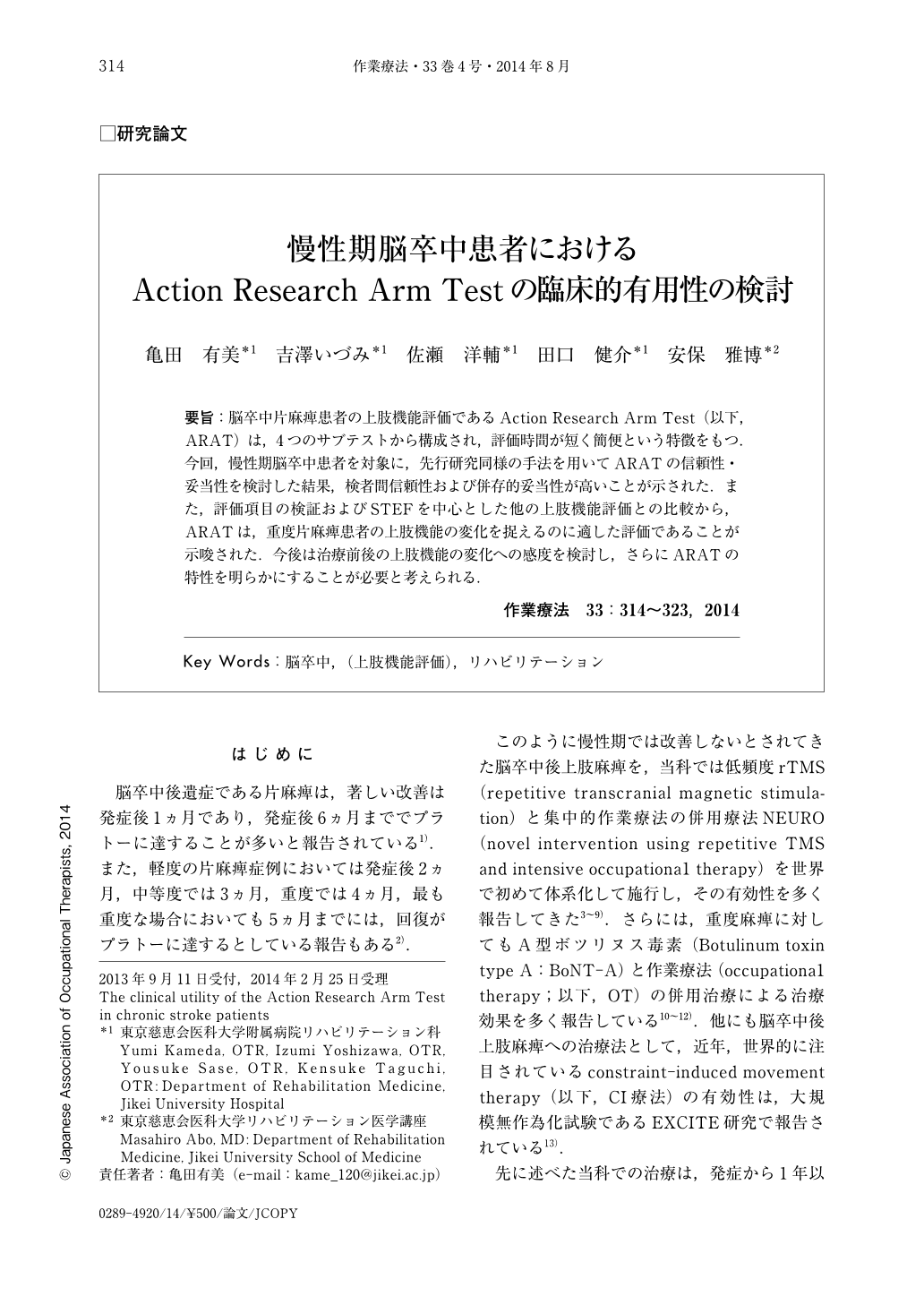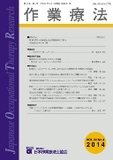Japanese
English
- 販売していません
- Abstract 文献概要
- 1ページ目 Look Inside
- 参考文献 Reference
- サイト内被引用 Cited by
要旨:脳卒中片麻痺患者の上肢機能評価であるAction Research Arm Test(以下,ARAT)は,4つのサブテストから構成され,評価時間が短く簡便という特徴をもつ.今回,慢性期脳卒中患者を対象に,先行研究同様の手法を用いてARATの信頼性・妥当性を検討した結果,検者間信頼性および併存的妥当性が高いことが示された.また,評価項目の検証およびSTEFを中心とした他の上肢機能評価との比較から,ARATは,重度片麻痺患者の上肢機能の変化を捉えるのに適した評価であることが示唆された.今後は治療前後の上肢機能の変化への感度を検討し,さらにARATの特性を明らかにすることが必要と考えられる.
The Action Research Arm Test (ARAT) was devised to assess the recovery of upper limb function after stroke. The ARAT score is the sum of 19 tests spread across each of 4 subscales: grasp, grip, pinch and gross movement. The purpose of this study was to verify the inter-rater reliability and validity of the ARAT as a supplementary study for chronic stroke patients. As a result, ARAT showed very high inter-rater reliability and correlation between Fugl-Meyer Assessment (FMA), and Wolf Motor Function Test (WMFT). Furthermore, the scores for the Simple Test for Evaluation hand Function (STEF) were very high. In addition, we verified the evaluation contents of ARAT and compared STEF, FMA and WMFT. The results suggest that ARAT is suitable to identify changes of upper limb function for stroke patients with severe hemiparesis.

Copyright © 2014, Japanese Association of Occupational Therapists. All rights reserved.


